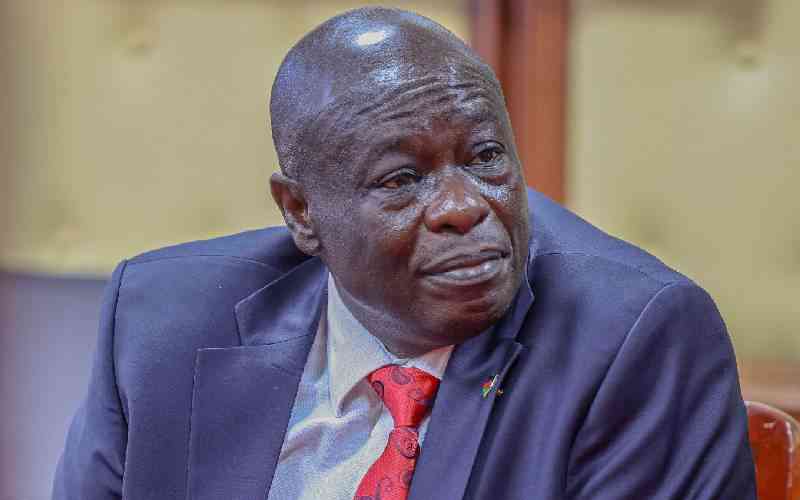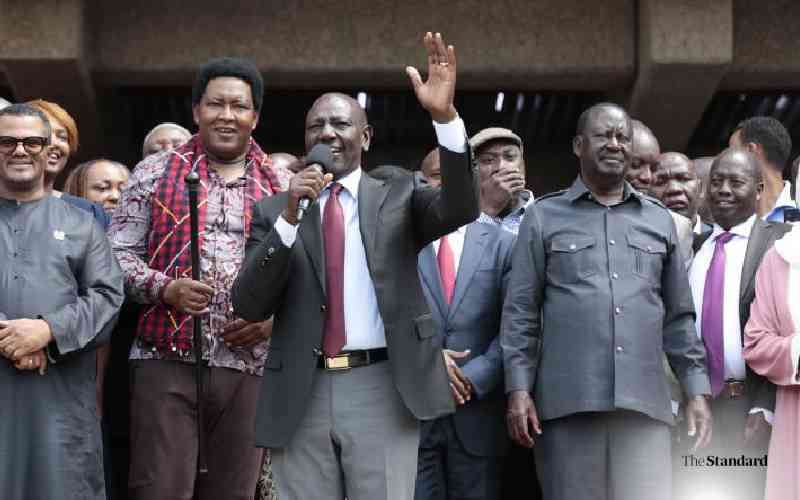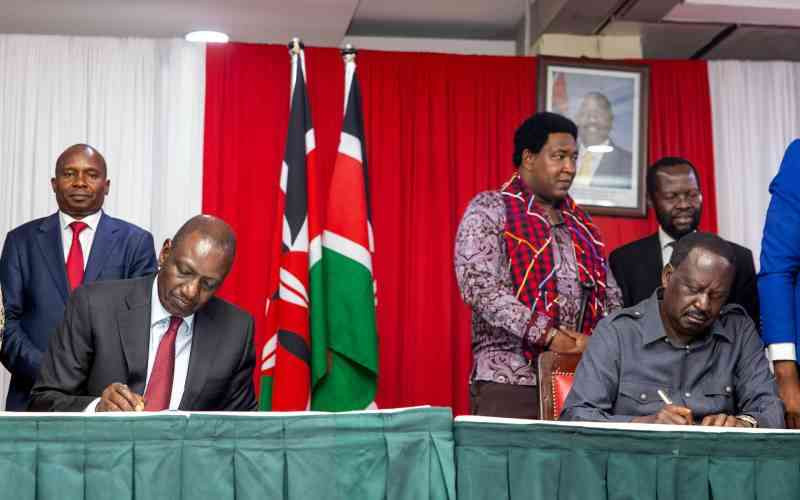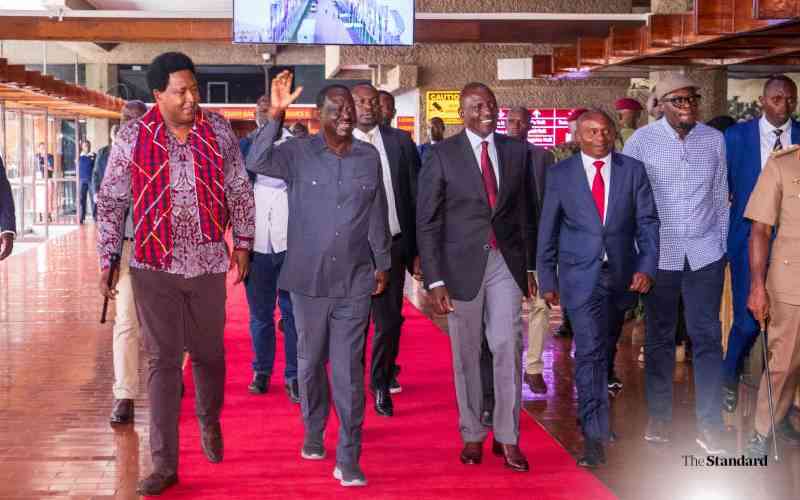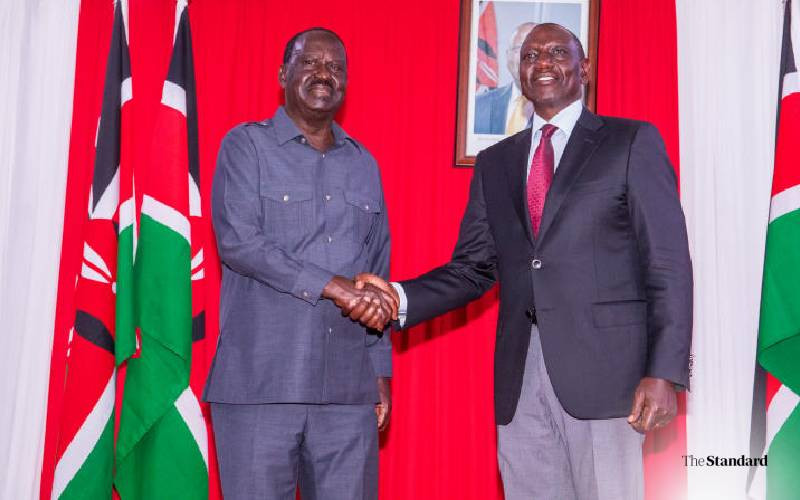
President Jomo Kenyatta led his Vice President Jaramogi Oginga Odinga through a triumphal arch in the garden of the Mwingi CDs home in kitui district. Behind Odinga is Daniel Moi. [File, Standard]
Kenya’s First Vice President Jaramogi Oginga Odinga described Second President Daniel arap Moi as “a giraffe with a long neck that see very far.” That was four years before independence when both Moi and six others were elected to represent Africans in the colonial parliament.
Jaramogi’s description of Moi began to unfold at independence...
 The Standard Group Plc is a multi-media organization with investments in media platforms spanning newspaper print
operations, television, radio broadcasting, digital and online services. The Standard Group is recognized as a
leading multi-media house in Kenya with a key influence in matters of national and international interest.
The Standard Group Plc is a multi-media organization with investments in media platforms spanning newspaper print
operations, television, radio broadcasting, digital and online services. The Standard Group is recognized as a
leading multi-media house in Kenya with a key influence in matters of national and international interest.

